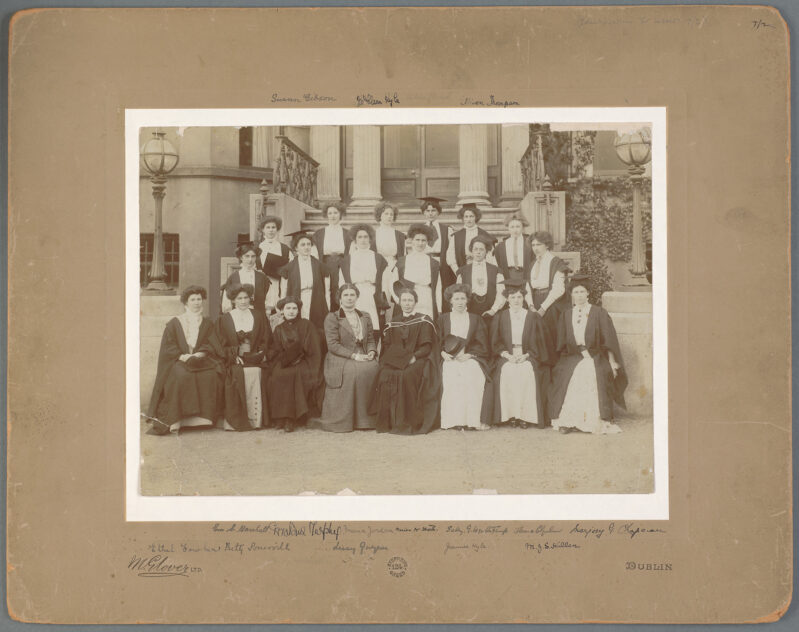
Trinity’s Long Room will play host to an exhibition celebrating the centenary of Trinity Women Graduates, a group founded following the admission of women into the College for the first time in 1904.
Trinity Women Graduates is tonight launching its centenary exhibition, celebrating the stories and experiences of the university’s female graduates from their first admission to the university in 1904, to the modern day.
The group was founded in 1922 as the Dublin University Women Graduates Association, at a time when women were not permitted on campus after 6pm and could not dine in the Dining Hall. Despite a name change along the way, the aims remain the same as those set out by the first women to graduate from Trinity in the 1920: to connect, support and inspire current and future generations of Trinity women graduates.
Titled “If a female had once passed this gate…”, the showcase will be on display in the Long Room as part of the Book of Kells exhibition and is also available online on the College library website and on Google Cultural Institute.
The exhibition was developed in partnership with the library as part of the Trinity Women Graduates’ archive project, which includes the cataloguing, conservation and digitisation of photographs, letters, administrative records and other documents that tell the history of Trinity’s female graduates.
The project follows the journey of female students and graduates towards admission, acceptance and equality within College.
Highlights of the exhibition include a statement from College Board, Trinity’s top decision-making body, from 1895 on the feasibility of admitting women to Trinity. There is also a petition signed by 10,560 “Irish Women of the educated classes” in favour of admitting women to College and a calligraphic memorial of the first women elected as Fellows of the College in 1968.
In a press statement, Ciara Daly, a project rchivist with the library and curator of the exhibition explained that “the main aim of Trinity Women Graduates was to afford members an opportunity to stay connected with the university and each other”.
“The archive comprises minute books, accounts, administrative records and photographs. It also contains reminiscences that were collected for Susan Parkes’ book A Danger To The Men?: A History of Women in Trinity College, Dublin 1904-2004”, she continued.
“These records and reminiscences give a deeper insight into the lived experiences of these women and ensures that the voices and experiences of these women form part of the historical record of both Irish society in the twentieth century and Trinity College Dublin.”
On the initial admission of women to College, Chair of Trinity Women Graduates Centenary Committee Grace O’Malley said: “Following a long campaign, the first three women were admitted to Trinity in January 1904. A further 47 were admitted the following September. Once admitted female students were subject to strict regulations because their presence was judged to be a danger to the men.”
“These rules and regulations did not deter women and by 1922 there were sufficient women in Trinity to warrant the foundation of an alumni society. A century later, 60 per cent of the student body is female and the university is led by a woman”, she added.
The exhibition will run from April 27th until the end of May in the Long Room and online.






